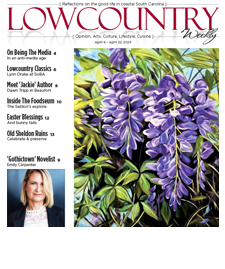Sadly I had to say good-bye to Franco. He was unable to make the move to South Africa with me. I sold him the Citroen for 25 Euros and filled the tank with gas. I have this strange feeling that we will meet again.
South African wines can trace their beginning to around 1659. The Dutch East Indies Company established a supply depot at what eventually came to be known as Cape Town. The depot was managed by Jan van Riebeeck, who was a surgeon by trade. His medical training was set aside in favor of his people and management skills. The depot became a permanent installation. Soon thereafter, in the outlying areas, it was discovered that grapes could well survive in the South African climate. One such area is Constancia (the first vineyards planted in South Africa), which is located just south of Cape Town. Grapes were planted on the slopes of the Constancia Mountain. Heat by day and cool ocean breeze by night; no grape could ask for more. Today there are five estates in Constancia still producing wine. However, for us in the Lowcountry, the only way we are able to get these wines is by special order. For you history buffs, be advised that Napoleon, while in exile in St. Helena, drank the dessert wine called Vin de Constancia. Napoleon was in good company. Frederick the Great and Bismarck were also fans of Constancia.
Moving east from Constancia we come to the wine region of Stellenbosch. This is the country’s leading wine area, and for us here in the US, the location from which we receive most of our South African wines. The town proper of Stellenbosch is dominated by Stellenbosch University. (By the way, parents, nothing to do with wine however; Stellenbosch University is an outstanding spot for undergrads to get a year of International Studies.) The outlying areas of Stellenbosch are split between red and white wine production. The red wines are produced east of the city, reaping the benefits of the rich granite-based soil. Some of the red wine examples are Cabernet Sauvignon, Merlot, and Shiraz. The white wines are produced in the west from sandstone soils. Some of the white selections are Chardonnay, Sauvignon Blanc, and Chenin Blanc. Wines that are exported to the US from Stellenbosch are very affordable, ranging from $7 to $25. Are there more expensive wines? Yes, however they fall into that special order category.
A brief mention of the Walker Bay Region is important because two wines from there land on our shore. They are Hamilton-Russell Chardonnay and Bouchard-Findlayson Pinot Noir. These two wines do not get to South Carolina YET. However, I keep shopping because they are a good wine value. The Chardonnay goes for $24 and the Pinot for about $32. If you come across these wines, try them out. You will not be disappointed.
On a spectacular evening in October 1997, I attended a wine tasting in Boston billed as “International” in scope. The billing was accurate. The main ballroom was filled with Distributors featuring wines from all over Europe, California, South America, and South Africa. Two distributors that featured South African wines included Pinotage in their presentation. I thought this rather strange. I was always of the opinion that Pinotage was the everyday wine of the South African folks. I was not too far off. However, the distributors were just trying to relate to those attending the tasting that Pinotage is pervasive to most of the wine regions in South Africa. Production of the wine satisfies the needs of the South Africans and that there is still some left over for export.
Allow me to go back to 1925 when Pinotage was first cultivated as a cross between Pinot Noir and Cinsaut. These grapes were selected for experimentation because it was hypothesized that together the grapes would produce a deep red varietal wine with smoky, bramble and earthy flavors. After much debate and interruption, the first VINE was produced at Elsenburg College and was named Pinotage. The first Pinotage WINE was presented in 1941. Serious recognition occurred when the wine won first prize at The Cape Town Wine Show of 1959.
I am singularly pointing out Pinotage because it has been planted in several countries including Brazil, the US, Canada, Israel, and Zimbabwe. It has met with only limited success in these countries. The best plantings and the most successful wines from Pinotage have been in South Africa. Therefore the South Africans refer to it as “their own.” It is available in Lowcountry retail stores.
Winespeak:
A word about Apartheid, or should I say the Post-Apartheid Period. Since 1994, the South African winemakers have no intention of ‘looking back.” Trade Sanctions have been lifted resulting in sales and exports to other nations around the world. This is supported by a passionate new generation of winemakers, many with international winemaking experience. There is a strong desire to be market driven and globally competitive. I believe they will make an impact on the wine market.





